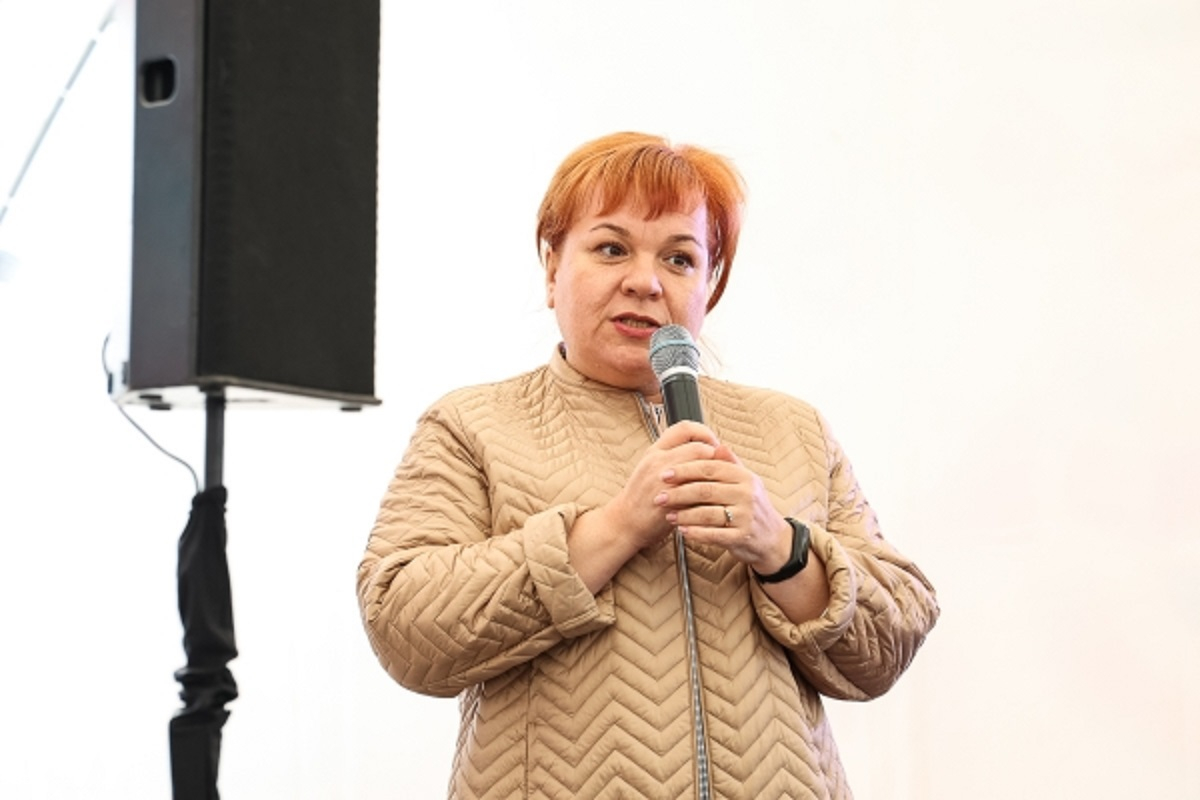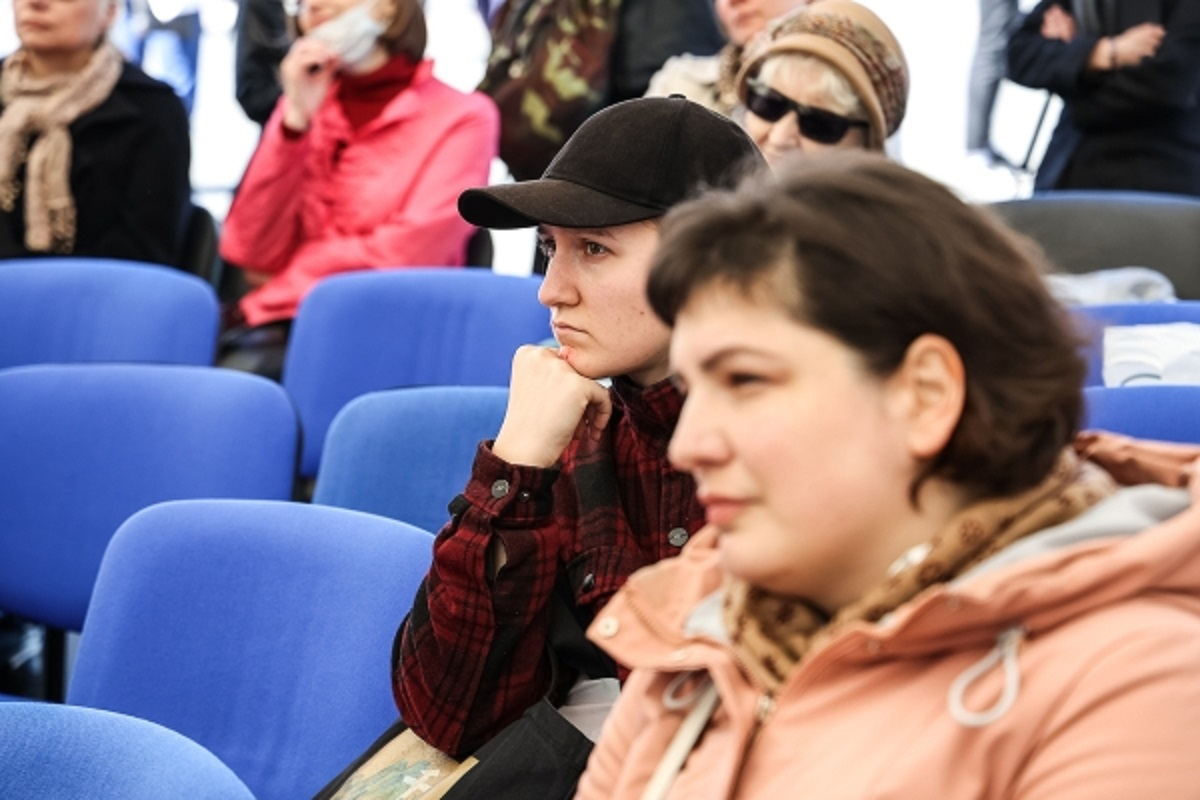Chinese spoken drama, ‘a failed scholar’s studio’ and the Sultan’s harem: St Petersburg University presents new translations at the St Petersburg Book Fair
At the 17th St Petersburg Book Fair, St Petersburg University has presented new publications dedicated to the cultures of China and Turkey.
New books presented on the final day of the St Petersburg Book Fair by the St Petersburg University Publishing House include: an anthology of contemporary Chinese drama; the first volume of the complete collection of short stories by Pú Sōnglíng; and a monograph on the Ottoman Imperial harem.
"Beauties": Contemporary Chinese Drama
The publication "Beauties: An Anthology of Contemporary Chinese Drama" contains six plays — translated into Russian for the first time — written by contemporary Chinese playwrights: Tián Hàn; Guò Shìxíng; Guò Qihong; He Jiping; Zōu Jìngzhī; and Liú Héng. The plays included in this anthology enable us to follow the evolution of Chinese dramatic literature from the middle of the 20th to the beginning of the 21st century.

The book was presented by Dmitrii Maiatskii, the executive editor of the publication and Associate Professor in the Department of Chinese Philology at St Petersburg University. According to Dmitrii Maiatskii, in Russian mass consciousness, the modern-day China is mainly perceived as the world’s fastest-growing economy and industrial powerhouse, whereas the set of views about the non-material culture of China is much narrower, primarily associated with the cultural heritage of this country. Access to the vast cultural heritage of China is rather limited for the average reader, which makes the release of the anthology of contemporary Chinese drama ‘Beauties’ a milestone event in the cultural life of Russia and China. Dmitrii Maiatskii also expressed his gratitude to the Chinese foundations and Capital Normal University (Beijing) for their help in preparing the publication.
The plays included in the anthology were translated by sinologists from St Petersburg University: Iuliia Bulavkina; Elena Emelchenkova; Dmitrii Maiatskii; Vera Muraveva; Mariana Ponomareva; and Elena Orlova.
Dmitrii Maiatskii explained that there are two types of drama theatre in China: classical, associated with traditional theatre Jīngjù (Peking opera is an example), and spoken theatre Huàjù, staging European-style plays. The latter appeared in China relatively recently — at the beginning of the 20th century. Since then, this type of drama and dramatic literature have become an important part of the China’s culture, combining the time-honoured traditions, the art of storytelling and word play.
The plays in the volume tell stories about: the life of the famous poet of the 8th century Li Bai ("Li Bai" by Guò Qihong); the problems of Chinese society in the turning point in history at the beginning of the 20th century ("Wotou Compound" (Wō tóu huì guǎn) by Liú Héng); the life and struggle of the Chinese in Shanghai, occupied by the Japanese during World War II ("Beauties" (Lìrén xíng) by Tián Hàn); the customs of the residents of the modern-day Beijing ("Birdmen" (Niǎo rén) by Guò Shìxíng and "Lucky Highrise" (Hǎo yùn dà xiá) by He Jiping); and, of course, love and treachery ("I love peach blossom" (Wǒ ài táo huā) by Zōu Jìngzhī).
Participants in the event received a welcoming message from the Consul General of the People’s Republic of China in St Petersburg Ms Wáng Wén Lì. ‘Chinese dramatic literature is one of the major research areas of the Faculty of Asian and African Studies at St Petersburg University. Dmitrii Maiatskii, the translator and editor of the Anthology of Contemporary Chinese drama "Beauties", has a deep understanding of traditional Chinese drama. I am certain that the publication will create a wider space for exchange and cooperation between Chinese and Russian scholars,’ the message said.
Stories from a Failed Scholar’s Studio
Professor Aleksandr Storozhuk, Head of the Department of Chinese Philology at St Petersburg University, has presented the first volume of the collection "Liáozhāi zhì yì. Strange Stories from a Failed Scholar’s Studio".

The literary path of Pú Sōnglíng, whose pen name was Liú Xiān, which translates as ‘to stay immortal’, was largely conditioned by his time. He was born in 1640, during the worst disasters in Chinese history — drought, famine, epidemic outbreaks, social unrest, followed by a change of dynasties. Born into an impoverished middle-class family, Pú Sōnglíng did not have wide opportunities for promotion. He studied hard and tried to make a career by first passing the imperial examinations, which would lead to securing an appointment as an imperial bureaucrat. Unfortunately, he passed the examination only at the county level and never succeeded at the provincial level. This did not, however, diminish his literary talents. ‘He was passionate about the traditions and folklore of Shandong Province, especially stories of the supernatural. Pú Sōnglíng collected them himself and asked his friends to send him stories about fairies, spirits and ghosts. He adapted and retold these stories, and also narrated his own novellas based on the old traditions of the native folklore,’ said Professor Storozhuk.
In 2021, St Petersburg University held an International Research Conference "Issues of Far Eastern Literatures" that marked the 380th anniversary of the Chinese writer Pú Sōnglíng.
The real popularity came to the Liáozhāi stories in the 19th century. In 1886, a classic illustrated edition was published with commentary by famous Chinese writers. Not all stories were included though — some of the stories were censored. In total, there are 497 stories, as well as a surviving preface to a lost lifetime collection.
The first translations into Russian passed largely unnoticed by the Russian public. This must have been due to the cultural challenges faced by the translator. ‘The style of the Liáozhāi stories is absolutely incredible. Pú Sōnglíng knew how to impress the well-versed in classical Chinese literature reader. There are a huge number of quotations, intertextual allusions and references. Starting with prose, the narrative can turn into rhythmic prose, then into poetry, and back into prose again,’ explained Professor Aleksandr Storozhuk. The first translator into Russian, who ‘felt his way’ to Pú Sōnglíng’s particular style, was Academician Vasily Alekseyev, Head of the Department of Chinese Philology at Leningrad State University in 1944-1950. His first translation came out a century ago — in 1922. Later, over following 20 years, three more collections were published. In total, about a third of Pú Sōnglíng’s oeuvre was translated by Academician Alekseyev. Thus, to date, most of the Liáozhāi stories have yet to be published in Russian.
The first volume of "Liáozhāi zhì yì. Strange Stories from a Failed Scholar’s Studio" contains both classical translations by Vasily Alekseyev and translations by Aleksandr Storozhuk, who translated Pú Sōnglíng’s short stories that have not been published in Russian before. A total of seven volumes of Pú Sōnglíng’s complete works are planned to be released. The St Petersburg University Publishing House offers the Liáozhāi stories in two slightly different designs — colour and black-and-white — but with the same text and illustrations. The best lithograph prints of the late 19th century are used as illustrative material.
Professor Storozhuk thanked the editor of the book — Associate Professor Dmitrii Maiatskii, the designer Elena Vladimirova, and the Chinese partners, including the Information Exchange and Cooperation Department of the Consulate General of the People’s Republic of China in St Petersburg. ‘Professor Aleksandr Storozhuk upholds the long-established academic tradition of Russian Sinology. His translation of the Liáozhāi stories shows his excellent knowledge of the Chinese language and in-depth understanding of Chinese culture,’ the message from the Consul General of China Ms Wáng Wén Lì said.
The Ottoman Imperial Harem as a social institution
"The Harem of the Last Ottoman Sultans" is a monograph by a Turkish historian, Curator of the historic presidential residence of Kemal Atatürk in Florya, Dr Tuncay Cengiz Göncü. In his monograph, Dr Göncü describes the social structure and way of life of the Ottoman Imperial harem in the 19th century. The monograph opens a series of publications on the modern history of Turkey. At the 17th St Petersburg Book Fair, this publication has been presented by Professor Apollinariia Avrutina, Director of the Centre for Contemporary Turkish Studies and Russia-Turkey Relations at St Petersburg University and translators Aleksei Obraztsov and Aliya Suleimanova, Associate Professors in the Department of Turkic Philology at St Petersburg University. The publication contains colour illustrations and photocopies of archival documents of the 18th-19th centuries, accompanied by translations into Russian.

Mr Özgün Talu, Consul General of the Republic of Turkey in St Petersburg, addressed the audience with a welcoming speech. He noted that the interest of the general public in the culture of the Ottoman Empire today has been fuelled by popular Turkish historical TV series, although the information they provide about the life of the Sultan’s palace is incomplete and not always accurate.
Dr Tuncay Cengiz Göncü — the author of ‘The Harem of the Last Ottoman Sultans’ — for many years has been engaged in museum tour guiding and curatorial activities in the Ottoman Imperial palaces. His vast experience was integrated and implemented in his academic research works. The monograph ‘The Harem of the Last Ottoman Sultans’ was translated into Russian with the support of the Ministry of Culture and Tourism of the Republic of Turkey and published by St Petersburg University.
Mr Özgün Talu, Consul General of the Republic of Turkey in St Petersburg
‘It fills up some serious cultural lacunae with evidence-based, documented information providing us with accurate data regarding the social structure in the day-to-day functioning of the Ottoman harem,’ said Mr Özgün Talu.
Aliya Suleimanova, Associate Professor in the Department of Turkic Philology at St Petersburg University, shared her impressions of the work as a translator of the monograph. She stressed that the book is based on archival documents and is not a book of fiction: Dr Göncü wanted to accurately depict the life of the harem, and not write another popular fiction novel on this topic. ‘The establishment of the Imperial harem as a social institution aimed to uphold the power of the state,’ clarified Aliya Suleimanova, adding that the harem also served as a social mobility ladder for concubines. Although women in the harem never officially participated in government, in fact, they did perform administrative functions, including management of the entire Imperial palace household. What is distinctive about the Ottoman Imperial harem is that the consorts of the sultan were of slave origin. To eliminate the risk of political pressure on the ruler, girls for his harem were not selected from noble aristocratic families, but were bought as slaves.
Aleksei Obraztsov, Associate Professor in the Department of Turkic Philology at St Petersburg University, noted that the book was written with great respect for women. The publication contains documents that testify that the concubines not only received monthly salaries — this was, indeed, very rare because usually salaries were paid once every three months — but they also received pensions. Aleksei Obraztsov said that, in fact, the purpose of such a powerful social and political institution as the Imperial harem was to guarantee continuity of the dynasty under any circumstances.
Professor Apollinariia Avrutina, Director of the Centre for Contemporary Turkish Studies and Russia-Turkey Relations at St Petersburg University, reminded that a few years ago, the Deputy Minister of Culture and Tourism of the Republic of Turkey Ms Özgül Özkan Yavuz visited St Petersburg University. During that visit, an agreement was reached that the Turkish side will finance a series of publications by Turkish writers in Russian translations. Next year, the St Petersburg University Publishing House plans to release two more publications of the series: "History of Ottoman Miniature" and "Istanbul Tales".











